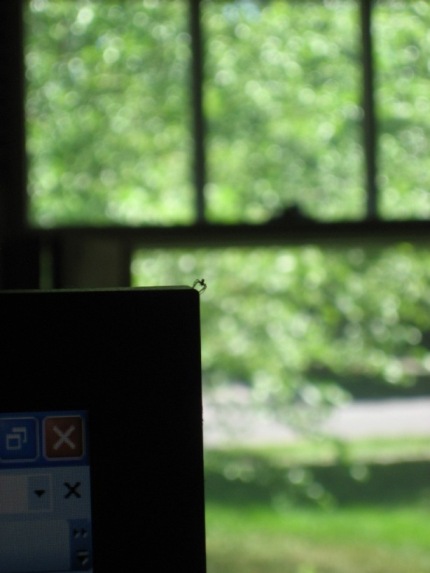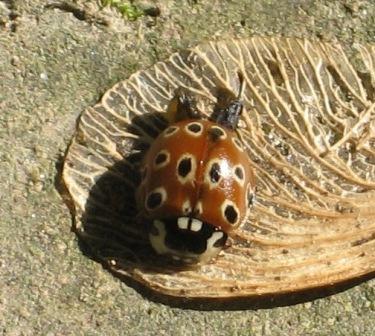I’ve hesitated posting about this subject because of all the alt-health things I’ve tried, this may be the one that is a true lightening rod. But I’m going public: since late spring of this year, I’ve been orthosupplementing with iodine.
I didn’t work up the courage to try this overnight. I first heard someone speculate that iodine deficiency might be ubiquitous about four years ago . . . that was from Ingeborg Eibl, a Rochester, New York chiropractor (and btw gifted healer).
Eibl mentioned iodine to me and gave me photocopies of some research papers to read. I looked them over but didn’t take it any further.
What’s changed since then is that the Internet now offers a wealth of information about iodine supplementation.
I started reading.
Most of the information is based on the work of a couple of medical researchers. Guy Abraham is one of them–he’s the driving force behind The Iodine Project, through which thousands of women have been supplementing with iodine to evaluate its ability to protect against breast disease.
Abraham and other pro-Iodiners share a couple of premises. First, that iodine is essential to a broad range of metabolic processes, and second that we’re not getting nearly enough from our diets (no, not even if we’re eating iodized salt).
How broad do I mean by “broad range?”
The commonly accepted medical opinion is that iodine’s only role in the body is to help make thyroid hormones. Although this is an extremely important function, Abraham demonstrates that the role of iodine in the body goes far beyond its function of making thyroid hormones. Other possible functions include: helping to regulate moods, preventing cancer (especially in breasts, ovaries, uterus, prostate and thyroid gland), preventing and treating fibrocystic breasts in women, helping to regulate blood pressure, helping to regulate blood sugar and prevent and treat diabetes, and helping to prevent abnormal cardiac rhythms.
Here’s another iodine supplementation website worth perusing. The page I’ve linked presents categories that themselves hyperlinked to pages with additional information, so you can read about Iodine and the breast, heart, immune system, gastrointestinal system, skin (I’ve read elsewhere that 20 percent of the body’s iodine is found in the skin), glandular system, lungs, eyes (“Iodine occurs in large quantities in the ciliary body and lachrymal glands of the eye. It has been related to cataract formation and glaucoma, and is seen as useful in treating eye infections. Iodide has been found to be protective against UVB radiation.”), mouth (“The salivary gland concentrate iodine 20 to 100 times serum levels.”), bones, and blood (“Iodine has been studied as an antioxidant in human blood and has been found to be as powerful as Vitamin C.”).
Unfortunately, although iodine was once touted as a highly beneficial nutrient, its reputation was tarnished in the mid-20th century. Abraham recounts what happened here. A couple of researchers injected rats with iodine, misinterpreted the experiment results, and extrapolated the misinterpretation to humans. Our government, which has never seen a cow pie too small to miss, went right for it, splat: it used the so-called Wolff-Chaikoff effect to help set the official RDA for iodine at a miniscule 150 mcg/day.
To make a bad decision even worse, most of us are probably getting even less Iodine than the RDA. Iodine was once commonly added to bread — it acts as a flour conditioner — but that has declined since the early 1980s (bread makers today often use bromide instead, which is molecularly similar but unfortunately not very good for us. Hell, why mince words, the s**t’s toxic, it’s poisoning us, and we’re exposed to it by far more than in the bread we eat — from pesticide residue to the fire retardants sprayed on our mattresses.)
There’s some iodine in some seafood, and in seaweed, and of course there’s iodized salt — but it’s debatable whether we eat enough iodized salt to maintain optimum iodine levels.
Mainland Japanese, meanwhile, consume considerably more iodine, because they eat quite a bit of seaweed. Abraham uses as his guideline 13 mg/day. Here’s a lower estimate, but at 1.2 mg/day it’s still nearly 10 times the US RDA.
Now. There’s a huge debate going on about all of this. I spent weeks reading arguments on both sides, including a series of articles published by Townsend Letter that pits Abraham and another M.D., David Brownstein, against Alan Gaby, M.D.
And maybe I’m being a damn fool. But in the end, it’s like the witticism that if you have two clocks you never know what time it is, while if you have only one clock you always know. I decided to trust the clock that says we should be eating more iodine than we are.
I also took it easy, especially at the beginning. Upping iodine can displace other molecules that one might have built up in the body, including the aforementioned bromide, as well as fluoride and mercury. I followed the advice published on this website, including taking the companion nutrients that have been identified as useful to help offset the “side effects” of bumping up iodine levels.
I did experience periods of what I believe to be detoxification. The worse came within a week of starting. The symptoms were uncomfortable (headache primarily, flu-like symptoms) but temporary. I took a break for a couple of days (pulsing, per Breast Cancer Choices) and never experienced those particular symptoms again. More recently I’ve hit a different set of (much milder) symptoms which I believe are caused by the displacement of fluoride and/or bromide in my body. As before, I pulse to give my body a chance to rest and “catch up” on eliminating the offending substances.
Other than these episodes, the experience has been amazing. I feel sooooooo good. It’s hard to describe. I was healthy already; I was a happy gal already. But I can tell there is something very different about how my body runs now. It’s akin to how you feel when you’ve been hungry, and finish a delicious meal. A kind of visceral sense of well-being. I should also report . . . sorry to be vague about this, can’t quite bring myself to discussing certain benefits explicitly . . . my experience bears out the promise of the research on breast health. It’s turned back the clock. How’s that for a benefit.
I would never go so far as to urge this onto other people. The plain fact is that many people should start this under the guidance of an iodine-savvy health care practitioner, particularly people who have existing thyroid conditions or who are sick or whose bodies are more compromised than mine with mercury or other toxins. (Here’s one place to start looking for a practitioner.)
But I would strongly, strongly urge everyone to take the time to look into it for themselves. I believe most of us are iodine deficient, and that one day in the not-too-distant future that will become a widely recognized fact. I believe that we’ll come to understand that a staggering range of systemic imbalances that are overtaking so many people, thinks like obesity and hormonal problems and osteoporosis, will be traced to lack of iodine.
You heard it here.
In the meantime, if this has grabbed your attention, do yourself a favor and start educating yourself. Don’t wait for mainstream medicine to catch up.










